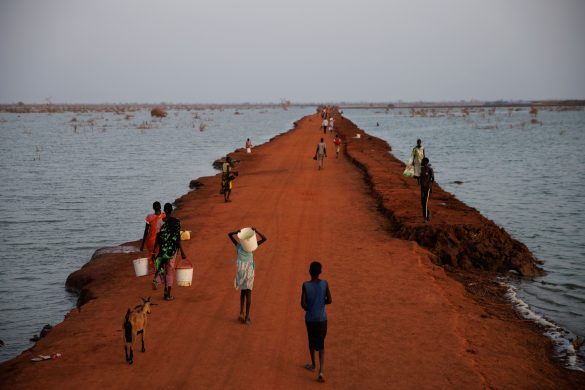Rystelserne i den europæiske økonomi kan ikke undgå at brede sig til verdens fattige lande og den store multilaterale bistandsdonor forudser svagere vækst end ventet i 2012 i Asien, Afrika og Latinamerika.
WASHINGTON, June 12, 2012: Developing countries should prepare for a long period of volatility (udsving) in the global economy by re-emphasizing medium-term development strategies, while preparing for tougher times, says the World Bank in the newly-released Global Economic Prospects (GEP), June 2012.
A resurgence of tensions in high-income Europe has eroded the gains made during the first four months of this year, which saw a rebound in economic activity in both developing and advanced countries and an easing of risk aversion among investors.
Since May 1st, increased market jitters (rystelser) have spread. Developing and high-income country stock markets have lost some 7 percent, giving up two-thirds of the gains generated over the preceding four months.
Most industrial commodity prices are down, with crude and copper prices down by 19 and 14 percent, respectively, while developing country currencies have lost value against the US dollar, as international capital fled to safe-haven assets, such as German and U.S. government bonds (statsobligationer).
So far, conditions in most developing countries have not deteriorated as much as in the fourth quarter of 2011. Outside of Europe and Central Asia and the Middle-East and North Africa, developing country credit default swap (CDS) rates, a key indicator of market sentiment, remain well below their maximums from the fall of 2011.
“Global capital market and investor sentiment are likely to remain volatile over the medium term – making economic policy setting difficult. In this environment, developing countries should focus on productivity-enhancing reforms and infrastructure investment instead of reacting to day-to-day changes in the international environment,” said Hans Timmer, Director of Development Prospects at the World Bank.
Increased uncertainty will add to pre-existing headwinds from budget cutting, banking-sector deleveraging and developing country capacity constraints.
As a result, the World Bank projects that developing country growth will slow to a relatively weak 5,3 percent in 2012, before strengthening somewhat to 5,9 percent in 2013 and six percent in 2014.
This baseline scenario remains the most likely outcome. However, should the situation in Europe deteriorate sharply no developing region would be spared.
Developing Europe (de svagere euroæiske lande) and Central Asia is especially vulnerable because of its close trade and financial ties with high-income Europe, but the world’s poorest countries will also feel the fall out – especially countries that are heavily reliant on remittances (tilbagesendelse fra deres borgere i udlandet), tourism or commodity exports or that have high-levels of short-term debt.
“Where possible, developing countries need to move to reduce vulnerabilities by lowering short-term debt levels, cutting budget deficits and returning to a more neutral monetary policy stance. Doing so will provide them with more leeway to loosen policy, should global conditions take a sharp turn for the worse,” said Andrew Burns, Manager of Global Macroeconomics and lead author of the report.
The full report and accompanying datasets are available at
www.worldbank.org/globaloutlook
Regional Highlights
Læs videre på
http://web.worldbank.org/WBSITE/EXTERNAL/NEWS/0,,contentMDK:23216493~pagePK:64257043~piPK:437376~theSitePK:4607,00.html
Kilde: Verdensbanken














